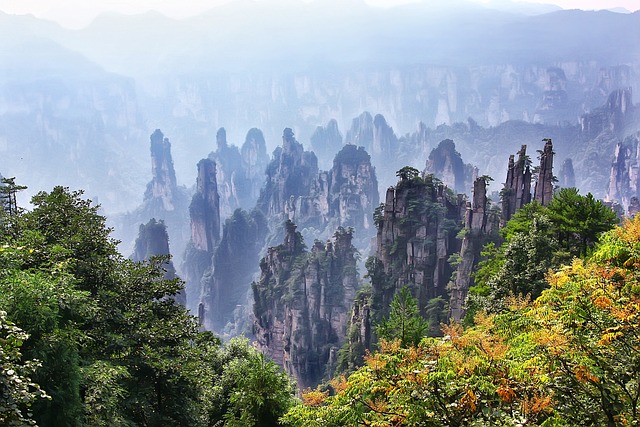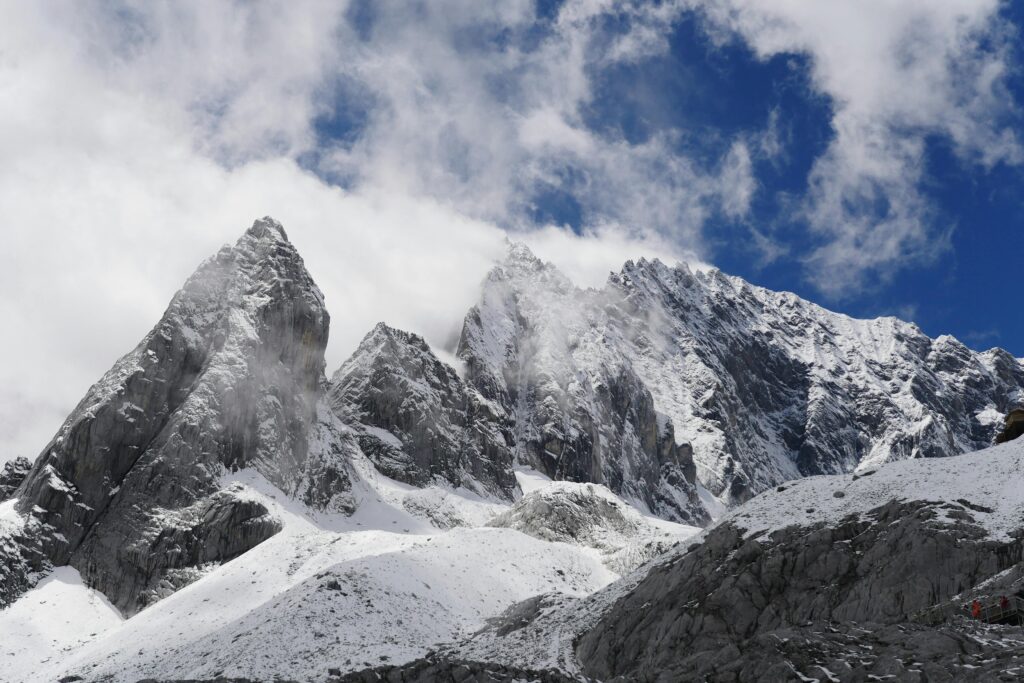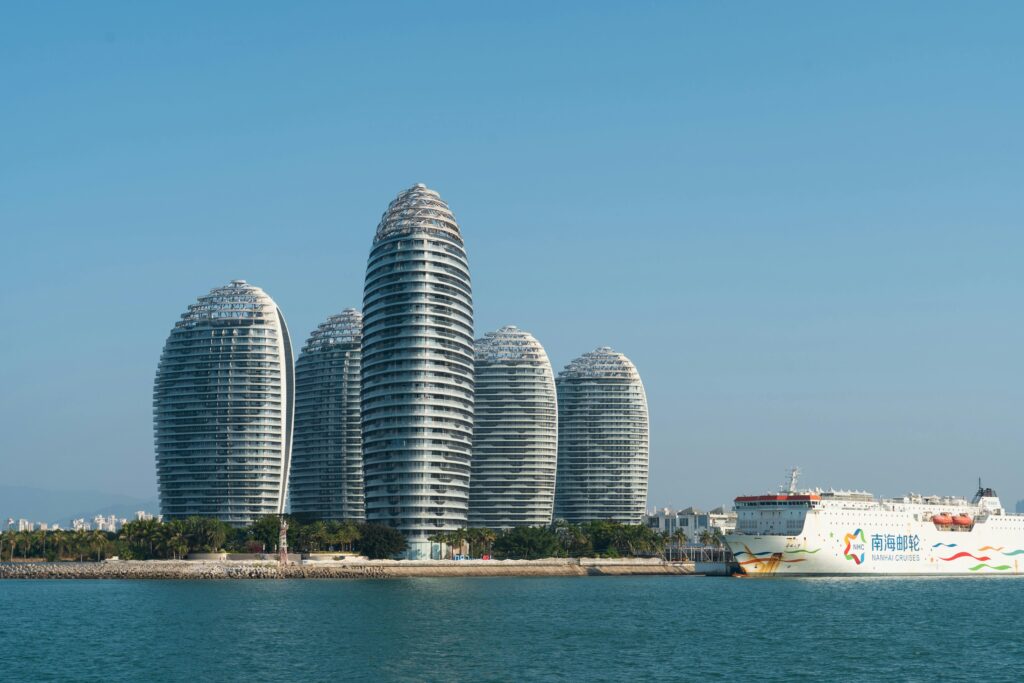China / 中华人民共和国 – Let’s explore here

What’s it like in China?
China is a massive and stunningly beautiful country in eastern Asia. It’s very diverse, in that there are deserts in the north and tropical rainforests in the south, as well as a number of the world’s highest mountain ranges. The highest point is Mount Everest, on the border with Nepal. As the world’s highest mountain, the peak is 29,032 ft (8,849 m) above sea level.
It also has one of the longest histories anywhere on earth, and is considered a cradle of civilisation.
As the world’s third largest country, it shares its border with 14 others – only Russia has as many. Its neighbours are Afghanistan, Bhutan, India, Kazakhstan, Kyrgyzstan, Laos, Mongolia, Myanmar, Nepal, North Korea, Pakistan, Russia, Tajikistan and Vietnam.
The population of China is around 1.4 billion people (2023), the second highest on the planet, after India. Around 22 million people live in the capital, Beijing, and one of the world’s most populous cities, Shanghai, is also in China, with around 30 million people.


A bit about the history of China
Early History and the Formation of the Chinese State
The history of China dates back thousands of years, with some of the earliest evidence of human civilisation found along the Yellow River. The earliest Chinese dynasties, including the Xia, Shang, and Zhou, developed a system of centralised government, social hierarchies and advanced technologies. During the Zhou Dynasty (1046–256 BC), the concept of the Mandate of Heaven was introduced, which became central to the idea of legitimate rule in China.
Imperial China and the Rise of Dynasties
China’s imperial history spans over two millennia, with the establishment of various dynasties that shaped the country’s culture, economy, and governance. The Qin Dynasty (221–206 BC) was the first to unify China under a single emperor, Qin Shi Huang, who also began construction on the Great Wall. The Han Dynasty (206 BC–220 AD) followed, solidifying the foundations of the Chinese empire and expanding its territory significantly.
The Silk Road and Cultural Flourishing
During the Tang (618–907) and Song (960–1279) Dynasties, China became a major center of trade, culture and innovation. The Silk Road facilitated trade between China and Europe, leading to an exchange of goods, ideas and technologies. The period also saw the flourishing of Chinese art, literature and science, with significant advancements in printing, gunpowder and compass technology.
Mongol Invasion and the Yuan Dynasty
In the 13th century, the Mongols, led by Genghis Khan, invaded China and eventually established the Yuan Dynasty (1271–1368), marking the first time China was ruled by a foreign power. The Mongol rule significantly impacted Chinese society, but the dynasty’s rule eventually weakened, and the native Ming Dynasty (1368–1644) rose to power.
The Qing Dynasty and Imperial Decline
The Qing Dynasty (1644–1912), founded by the Manchu people, was the last imperial dynasty of China. Under the Qing, China expanded to its modern territorial borders, but by the 19th century, the dynasty began to face internal and external pressures. The Opium Wars with Britain, the Taiping Rebellion, and foreign encroachments weakened the empire. By the early 20th century, the Qing Dynasty was in decline.
The Fall of the Qing and the Republic of China
In 1911, the Qing Dynasty collapsed after the Xinhai Revolution, leading to the establishment of the Republic of China under Sun Yat-sen. The fall of the Qing Dynasty marked the end of over two thousand years of imperial rule. However, the new republic faced significant challenges, including warlordism, internal divisions and foreign influence.
The Chinese Civil War and the Rise of Communism
In the early 20th century, China was embroiled in a civil war between the Nationalists (Kuomintang) led by Chiang Kai-shek and the Communists led by Mao Zedong. After years of conflict, the Chinese Communist Party (CCP) gained control in 1949, establishing the People’s Republic of China. The Nationalist government retreated to Taiwan, where it continued to claim to be the legitimate government of all China.
Maoist China and the Cultural Revolution
Under Mao Zedong, China underwent significant political, social and economic changes. The government implemented radical policies such as the Great Leap Forward (1958–1962), which aimed at rapidly industrialising China but led to widespread famine. The Cultural Revolution (1966–1976) was a period of social upheaval in which Mao sought to eliminate perceived counter-revolutionary elements, leading to violence, persecution, and a major impact on Chinese society.
Economic Reforms and Modernisation
After Mao’s death in 1976, China underwent significant political and economic reforms under the leadership of Deng Xiaoping. Beginning in the late 1970s, Deng implemented policies of economic liberalisation, opening China to foreign investment, and shifting from a centrally planned economy to a more market oriented one. These reforms led to rapid economic growth and the transformation of China into one of the world’s leading economies.
The 21st Century and Global Power
In the 21st century, China has become a global economic powerhouse, with a growing influence in international politics, trade and technology. Under the leadership of Xi Jinping, China has pursued policies of modernisation, technological advancement and military expansion. The country has also faced challenges, including concerns over human rights, political freedoms, and tensions in the South China Sea and with Taiwan.
China Today
China is currently the world’s second most populous country with the second largest economy. It remains under the rule of the Communist Party, with Xi Jinping serving as president and the party maintaining strict control over political life. While the country has made enormous strides in infrastructure, technology and poverty reduction, issues such as censorship, political repression, and environmental concerns remain important aspects of modern Chinese governance.



China road trip
We haven’t finished our planning for our road trip through China yet. When we do though, we’ll post it here, and in the blog.
Hopefully our journey will improve our knowledge of this intriguing and beautiful country, and enable us to meet some interesting people. We’ll be updating this page at that time – don’t forget to check back 🙂
Map of China

What’s it like to drive in China?
They drive on the right hand side of the road in China. Whilst the main roads and roads in cities are generally in good condition, in some remote areas, the roads are poor. Driving standards are quite good.
Can you take your own car into China?
Overlanding across China is a bureaucratic nightmare! You cannot just turn up at the border. You will need to secure an official guide to help you cross the country, which may take a long time to organise. Most of the guides will accept you sharing the cost with others who want to cross at the same time as you, as costs are prohibitive. You will also need to obtain a temporary driving permit to drive in China. Check out overlanding groups online, as others may also be on with organising such a trip.
Do you require an international driving permit in China?
We’ve created a dedicated page to driving abroad, which answers this question, and more, which you might find helpful.
Can you use your UK driving license when driving through China?
We’ve created a dedicated page to driving abroad, which answers this question, and more, which you might find helpful.
Do I need a carnet de passages to drive in China?
We’ve created a dedicated page to driving abroad, which answers this question, and more, which you might find helpful.
What currency do they use in China?
In China they use the Renminbi. Cash is widely used. The use of credit / debit cards is widely accepted in cities, though not so much in rural areas. Travellers cheques are not readily accepted. There are many ATMs in cities and towns throughout the country.
You should make yourself aware of the amount that your bank charges you for using credit and debit cards abroad. Often credit cards are cheaper for purchasing items directly, and for withdrawing cash from ATMs.
What language do they speak in China?
They speak Mandarin in China, although there are almost 300 languages in China. English is increasingly widely spoken in cities, in particular amongst the younger generations.
What time zone is China in?
Incredibly there is only one time zone across China, despite its massive size. Remember, when you’re planning your next trip to take a look at what time zone it’s in.
Do I need a visa to visit China?
We’ve created a dedicated, more comprehensive page on visas, which you should find helpful. Check it out!
Is wild camping legal in China?
Yes, wild camping is fine in China.
What plug / socket type do they use in China?
In China they use plug / socket types A, C and I.



Health issues in China
Is it safe to drink water in China?
No, it is not safe to drink tap water in China. Bottled water is readily available throughout the country.
What vaccinations are required for China?
This NHS website is kept up to date with all relevant information on vaccinations in China.
Phones in China
What is the country calling code for China?
The country calling code for China is +86
What are the emergency phone numbers in China?
- The emergency number for police in China is: 110
- In China, the emergency number for ambulance is: 120
- The emergency number for fire in China is: 119
If you’ve got some useful info that you’d like to share, let us know!
And don’t forget to check out all the other pictures!
